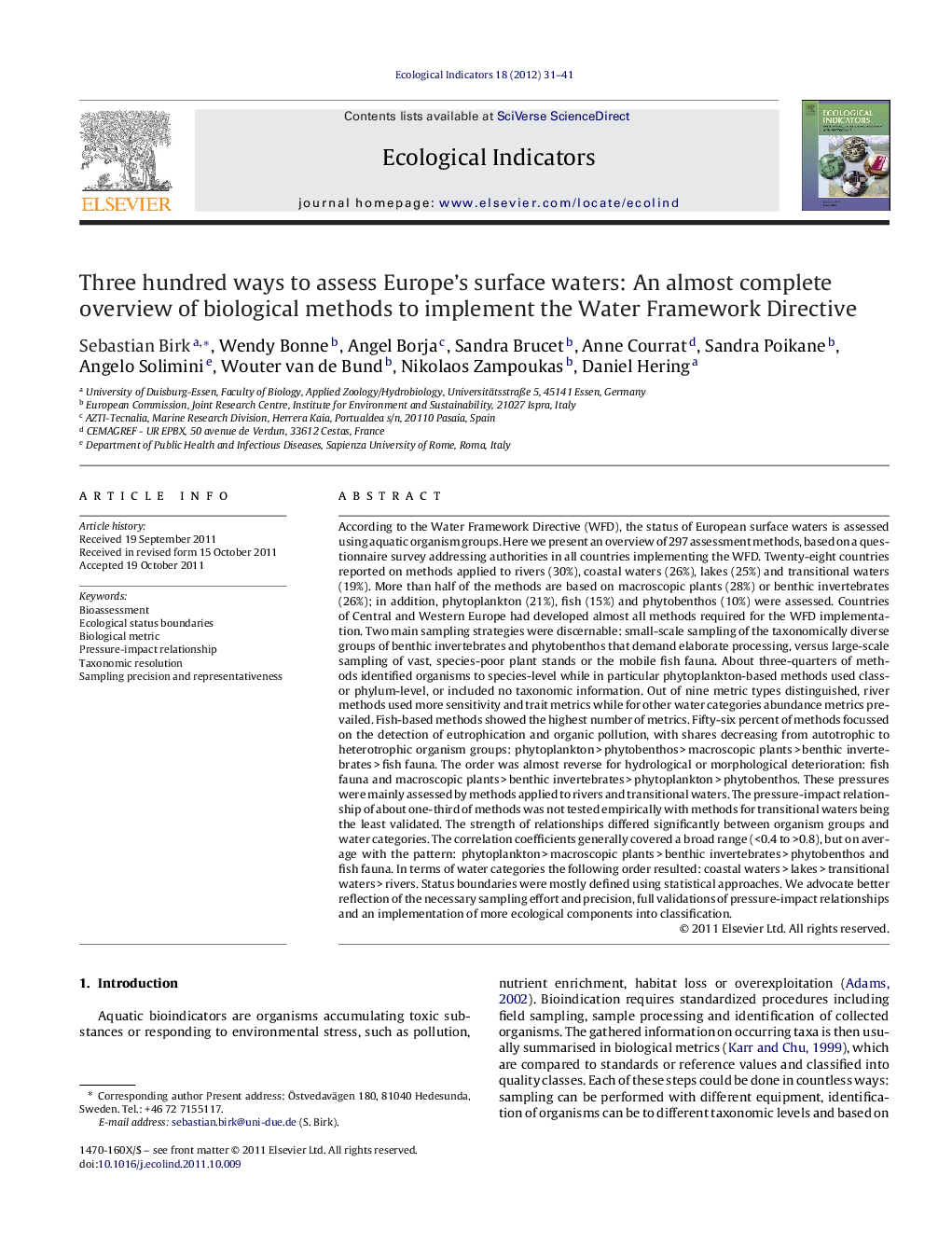| Article ID | Journal | Published Year | Pages | File Type |
|---|---|---|---|---|
| 4373757 | Ecological Indicators | 2012 | 11 Pages |
According to the Water Framework Directive (WFD), the status of European surface waters is assessed using aquatic organism groups. Here we present an overview of 297 assessment methods, based on a questionnaire survey addressing authorities in all countries implementing the WFD. Twenty-eight countries reported on methods applied to rivers (30%), coastal waters (26%), lakes (25%) and transitional waters (19%). More than half of the methods are based on macroscopic plants (28%) or benthic invertebrates (26%); in addition, phytoplankton (21%), fish (15%) and phytobenthos (10%) were assessed. Countries of Central and Western Europe had developed almost all methods required for the WFD implementation. Two main sampling strategies were discernable: small-scale sampling of the taxonomically diverse groups of benthic invertebrates and phytobenthos that demand elaborate processing, versus large-scale sampling of vast, species-poor plant stands or the mobile fish fauna. About three-quarters of methods identified organisms to species-level while in particular phytoplankton-based methods used class- or phylum-level, or included no taxonomic information. Out of nine metric types distinguished, river methods used more sensitivity and trait metrics while for other water categories abundance metrics prevailed. Fish-based methods showed the highest number of metrics. Fifty-six percent of methods focussed on the detection of eutrophication and organic pollution, with shares decreasing from autotrophic to heterotrophic organism groups: phytoplankton > phytobenthos > macroscopic plants > benthic invertebrates > fish fauna. The order was almost reverse for hydrological or morphological deterioration: fish fauna and macroscopic plants > benthic invertebrates > phytoplankton > phytobenthos. These pressures were mainly assessed by methods applied to rivers and transitional waters. The pressure-impact relationship of about one-third of methods was not tested empirically with methods for transitional waters being the least validated. The strength of relationships differed significantly between organism groups and water categories. The correlation coefficients generally covered a broad range (<0.4 to >0.8), but on average with the pattern: phytoplankton > macroscopic plants > benthic invertebrates > phytobenthos and fish fauna. In terms of water categories the following order resulted: coastal waters > lakes > transitional waters > rivers. Status boundaries were mostly defined using statistical approaches. We advocate better reflection of the necessary sampling effort and precision, full validations of pressure-impact relationships and an implementation of more ecological components into classification.
▸ We review 297 bioassessment methods of European surface waters. ▸ The overview includes methods for phytoplankton, benthic flora and fauna, and fish. ▸ Abundance and sensitivity metrics dominate, detecting organic and nutrient pollution. ▸ The pressure-impact relationship of >30% of methods is not tested empirically. ▸ Quality class boundaries were mostly set statistically lacking an ecological rationale.
